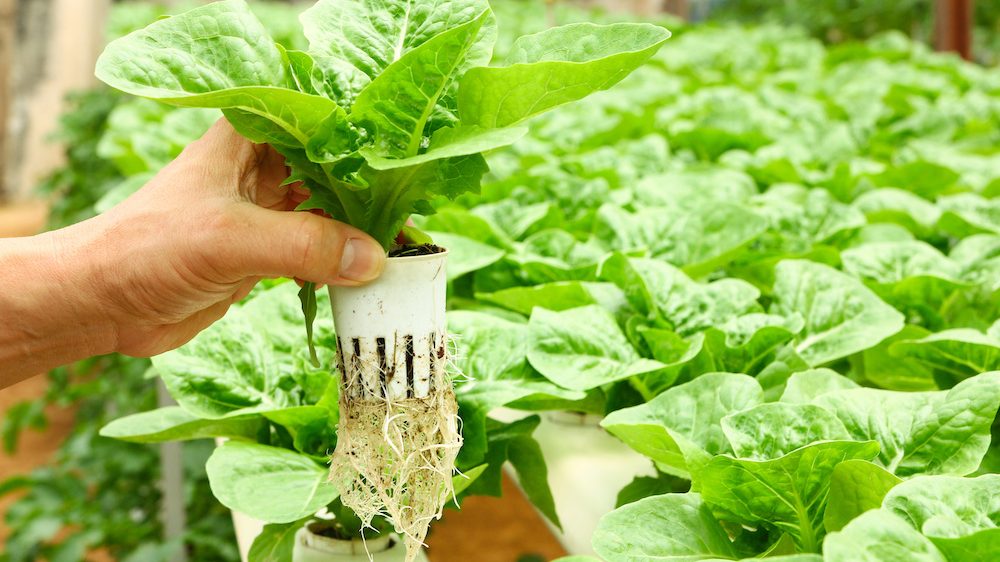
More and more home gardeners are growing lush vegetables and plants with hydroponics systems. Hydroponic gardeners say this ancient historical method produces phenomenal plant growth and high yields. What is hydroponics?
An ancient approach
Cultures dating back 2,500 years gardened by setting plants in containers without soil, then continually bathing their root systems with a steady flow of nutrient-rich water. The result was vegetables and herbs with lush foliage and high production.
How does a hydroponic system work?
Just like the ancients, today’s hydroponic gardeners grow plants without using soil. Now plants are placed in containers that keep them upright. Their roots, supported by a medium, hang down into water infused with micronutrients. Hydroponics should not be confused with aquaponics, which involves using water stocked with fish to supply nutrients to plants.
Hydroponics produces fast-growing, robust plants because the roots don’t have to search through soil to find nutrition. Plants thrive, growing faster and providing more produce than conventional gardening.
You can buy a hydroponics kit or make your own system. Your hydroponic garden can be a sizable system in your backyard or a tidy one on your apartment balcony.
Kit or DIY?
Hydroponics kits are available at nurseries and on Amazon at a wide range of prices. You can assemble them in minutes.
If you’re a DIYer, you can learn from online videos how to build your own hydroponic system for under $100 worth of materials and an hour or two of your time. These supplies can also be purchased from online home retailer websites.
A simple homemade hydroponic system begins with a 10- to 20-gallon plastic tub with a lid. Round holes cut into the top hold small cups perforated with holes or slots that allow water to flow through freely. Plants are set into these pots with gravel-like filler to hold them upright. Water fills the tub and is continuously pumped to circulate and aerate. Nutrient solutions are added to the water at regular intervals to feed the plant root systems.
Another system uses lengths of four-inch diameter PVC pipe mounted horizontally on a frame at a slight slant. Holes are cut along the length of the pipe and plants are set in them. A pump circulates water to the higher end of the pipe, which allows it to flow downward, then drain back to a reservoir. The water is then pumped back up again, continually bathing the plant roots with nutrient-rich water.
Systems using a pump are called active hydroponic systems. Passive systems rely on a wick to draw water up to the roots.
Hydroponics root medium and nutrients
You can use several types of medium to support the roots of your growing plants: gravel, Hydrocorn, Rockwool, vermiculite and some sands. Nutrient solutions come highly concentrated, in liquid and powdered forms that dissolve in water. Organic nutrients are available, but be aware that the powdered version of these can clump together and clog your pump.
You should check the water’s pH level weekly using a test kit you can buy online or from a nursery.


